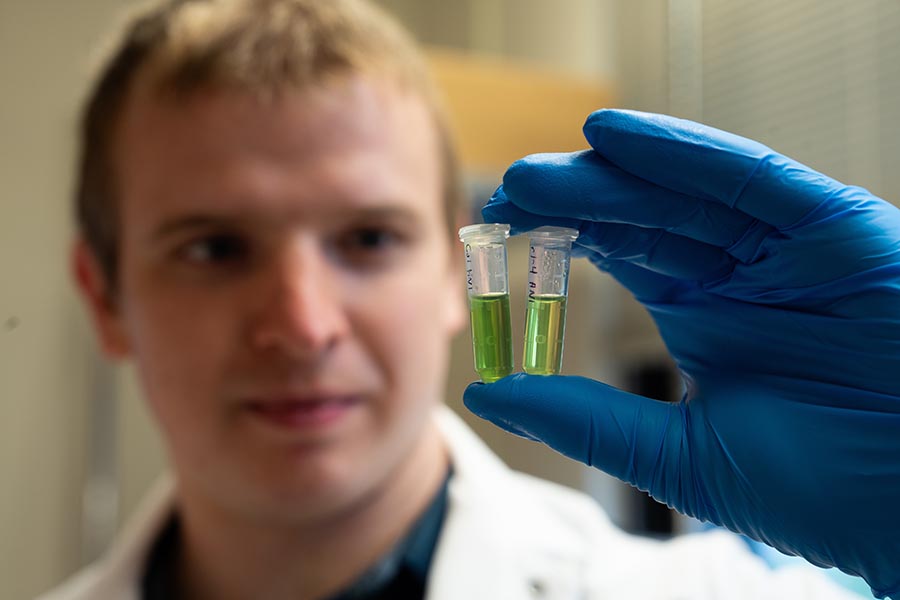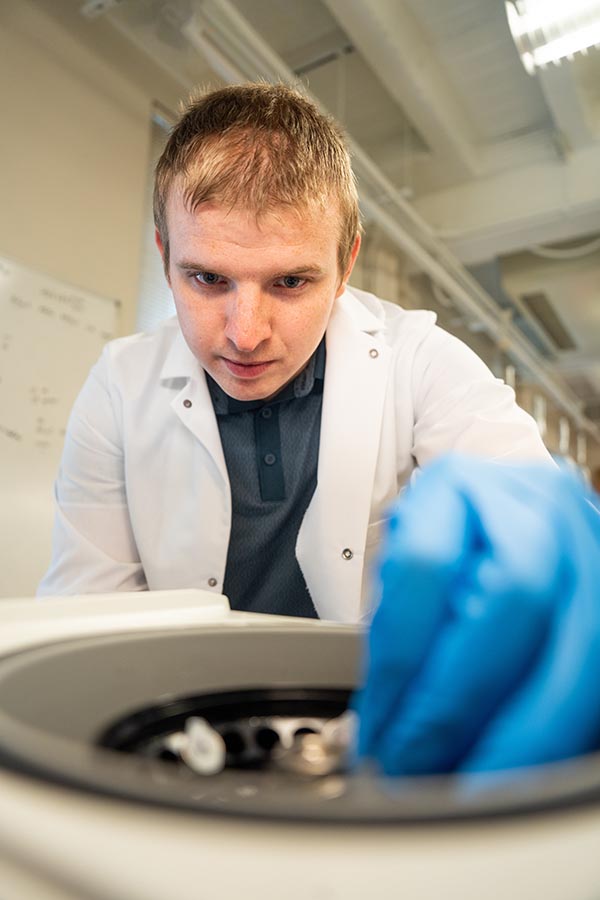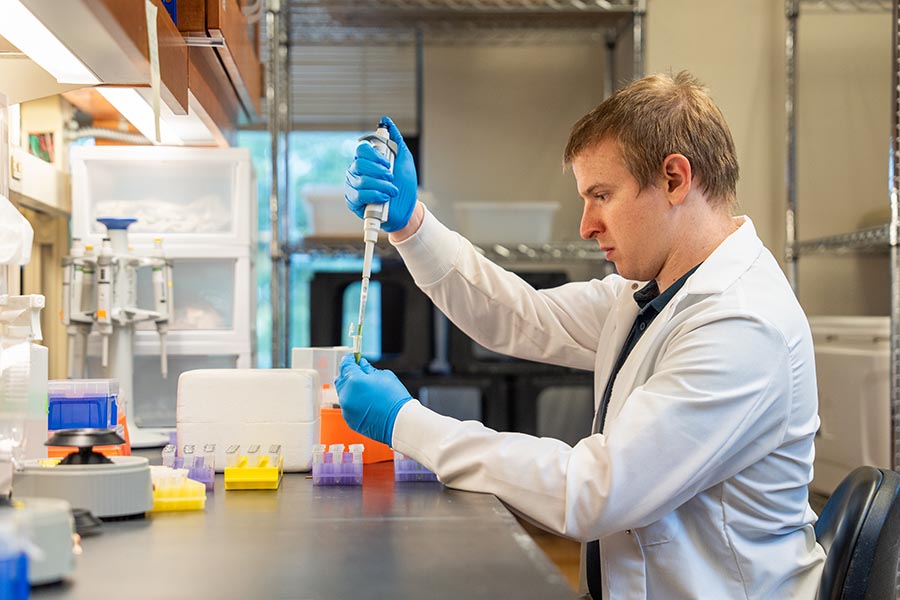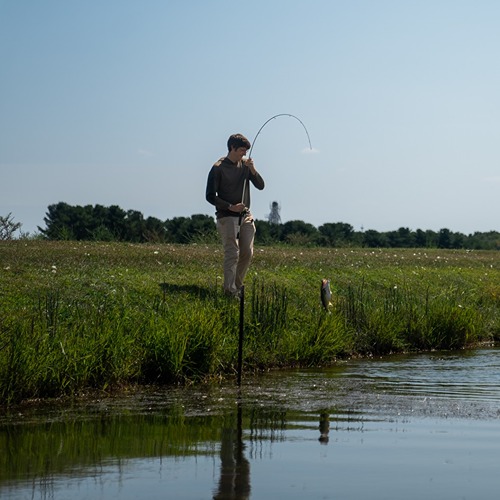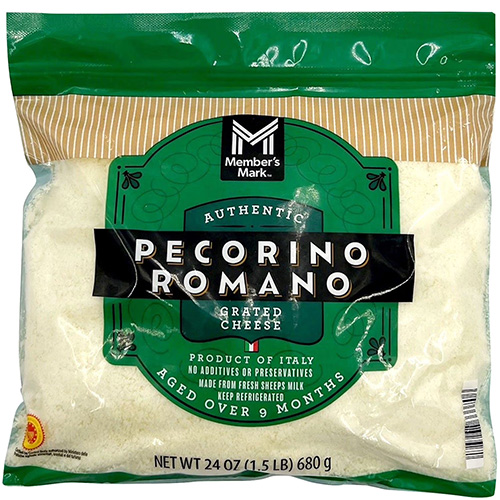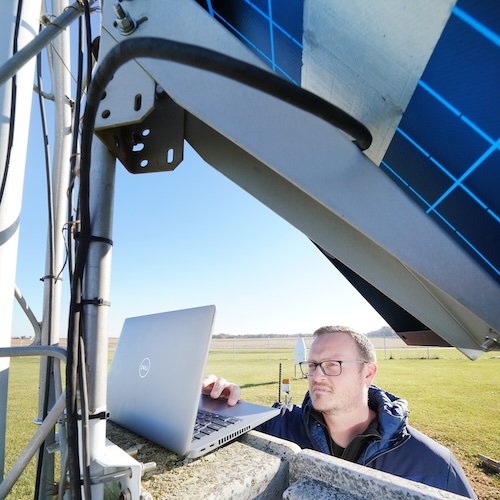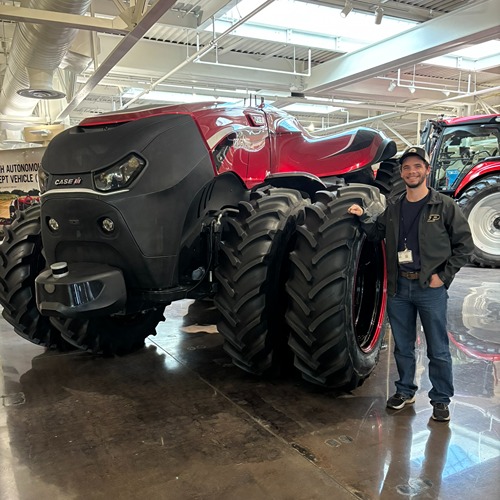Leo Koenigsfeld - Graduate Ag Research Spotlight
PULSe gave me the chance to perform different techniques than I would have if I’d directly joined a lab. I got a real variety of experiences.
- Leo Koenigsfeld, Horticulture & Landscape Architecture
The student
Leo Koenigsfeld grew up in a small town in central Missouri with the unlikely name of ‘Frankenstein’ — “not named after the book!” he says. His grandparents on both sides farmed, so he had a close-up view of agriculture from a young age. It was hard work, but fascinating, he thought, with so many factors to consider – crop rotation, irrigation, fertilizer amounts. In school, he became interested in biology and genetics, which he pursued at the University of Missouri, where he double majored in biochemistry and plant sciences. There, he had the opportunity to work in a research lab looking at soybean nematode resistance and maize developmental genetics.
“I got hooked on research,” he says. “I’ve always been a very curious person.”
A PhD at Purdue was a natural next step – “there were numerous professors here who had work I was interested in,” he says. “Purdue was a good school for my future.”
Koenigsfeld arrived in West Lafayette 2022.
The research
Koenigsfeld began his studies as part of the Purdue University Interdisciplinary Life Science Program (PULSe), a highly selective program for PhD candidates interested in life sciences. Students rotate through different labs to broaden their experience before choosing where to settle.
“PULSe gave me the chance to perform different techniques than I would have if I’d directly joined a lab,” he says. “I got a real variety of experiences.”
When Koenigsfeld rotated through Dr. Ying Li’s lab in the Department of Horticulture & Landscape Architecture, he knew he’d found his home.
“Dr. Li’s lab combines genetics, molecular biology and informatics,” he says. “I felt like it gave me a greater variety of experiences and helped fill in my skill set.”
As an undergraduate, Koenigsfeld had worked in traditional genetics, and was eager to increase his bioinformatics knowledge. In Dr. Li’s lab, he’s worked primarily on DNA methylation changes in response to nitrogen availability. He hopes that his work might one day uncover novel targets for improving nitrogen efficiency. Better nitrogen efficiency is an enduring goal of farmers – “my grandparents always say how great it would be to apply less fertilizer,” Koenigsfeld says.
Opportunities
“Dr. Li is great as a mentor,” Koenigsfeld says. “She’s always available for support, but also gives me lots of freedom to determine to course of my own project.”
In addition to his work in Dr. Li’s lab, Koenigsfeld has had the chance to work with researchers in Israel on methods of improving grapes’ longevity in storage. All of the plant work is done in Israel, while Koenigsfeld does data analysis.
Purdue has offered a myriad of opportunities outside the lab as well, from conferences – Koenigsfeld presented a poster at the American Society of Plant Biology (ASPB) meeting in Milwaukee last summer, and attended the Midwest ASPB conference here at Purdue – to workshops, professional development and social activities through PULSe and the Center for Plant Biology’s Trainee Association.
Future plans
When Koenigsfeld is not working, he’s usually busy playing with his one-year-old son. He also enjoys hiking, reading, and playing video games.
After graduation, Koenigsfeld plans to look for a postdoc, probably in epigenetics. Eventually he hopes to be a research professor.
“I really enjoy research,” he says. “I’m interested in finding answers to questions no one has answers for yet.”
